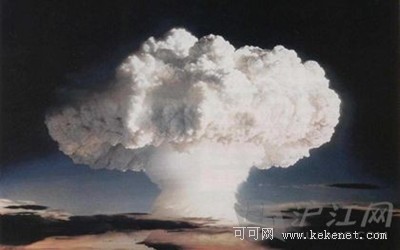
The world's first nuclear reactor is prehistoric
史前核反应堆
It's not easy to create a controlled nuclear reaction in power plants, but the nature had created the world's first nuclear reactor two billion years before humankind, beneath the surface of Oklo in Gabon, Africa. This natural reactor formed when a uranium-rich mineral deposit came in contact with groundwater, which slowed the neutrons ejected from the uranium so that they could interact with and split other atoms. Heat was produced, turning the water to steam, thus temporarily slowing the chain reaction. The environment cooled, water returned, and the process repeated. Scientists estimate that this prehistoric reactor ran for a hundreds of thousands of years, producing the various isotopes expected from such reactions.
在发电厂要控制好核反应可不是件容易的事,但是自然的鬼斧神工在人类出现的两百万年前就已经制造出了世界上第一次的核反应堆,位于非洲加蓬的奥克洛地区的地下。这一地区富含铀矿,当铀元素与地下水接触后,就会减缓铀释放出中子,这样它们就可以相互作用并分裂出原子从而产生热量,使水变成蒸汽,暂时放慢连锁反应的速度。当温度下降后,蒸汽又变成了水,这一过程重复进行。科学家预计这一史前核反应持续了上百万年,并从中释放出了大量同位素。












